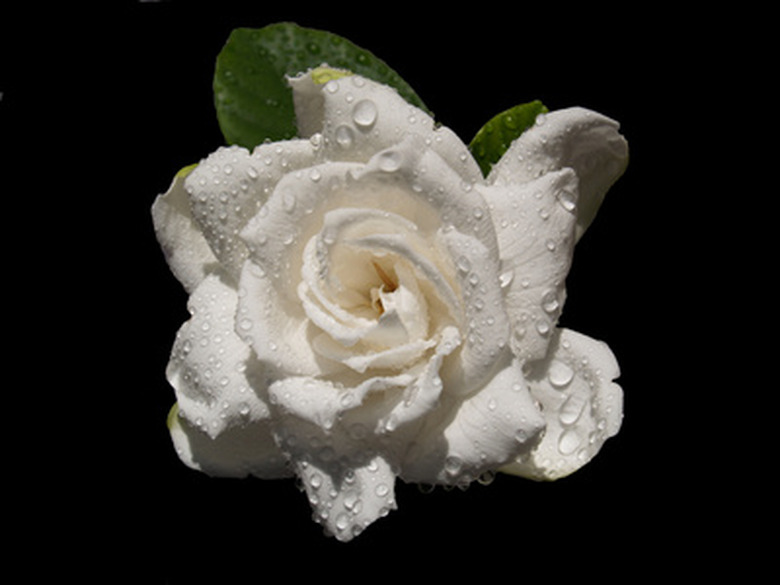How To Grow Healthy Gardenias In Hawaii
Gardenia jasminoides, the common gardenia, is a highly fragrant flowering plant that does very well in Hawaiian gardens. The gardenia is a favorite flower for corsages and cut flower arrangements because its flowers last several days in water and its evergreen leaves are also attractive. Flowers can be either single or double. If you live at an elevation between 10 feet above sea level and 2,500 feet, the gardenia is a lovely spring-blooming addition to your Hawaiian garden.
Step 1
Select a sunny location for your gardenia if you live at a higher elevation where temperatures are cooler than near sea level. If you're close to the ocean, plant your gardenia in filtered sun. Avoid heavy shade because your gardenia's leaves will be weak and thin and its flowering will be reduced.
- Gardenia jasminoides, the common gardenia, is a highly fragrant flowering plant that does very well in Hawaiian gardens.
- The gardenia is a favorite flower for corsages and cut flower arrangements because its flowers last several days in water and its evergreen leaves are also attractive.
Step 2
Check your soil pH — gardenias prefer moist, rich, acidic soil with a pH of 5.0 to 5.5. To increase your soil pH, add hydrated lime; to reduce pH, add sulfur. Even with the correct pH, gardenias will benefit from the addition of organic materials. Dig a planting hole twice the size of the root ball and combine an equal amount of peat moss, ground bark and any type of compost with the soil you dug out.
Step 3
Plant your gardenia 5 to 6 feet from other plants. Remove it from its nursery pot and gently set it into the planting hole, separating and loosening the roots if the plant is root-bound. Be careful not to bury the crown when you fill the planting hole with the soil/compost mixture you dug out. Water it in well with at least 2 gallons of water. Always keep the soil evenly moist to keep your plant healthy.
- Check your soil pH — gardenias prefer moist, rich, acidic soil with a pH of 5.0 to 5.5.
- Remove it from its nursery pot and gently set it into the planting hole, separating and loosening the roots if the plant is root-bound.
Step 4
Fertilize your gardenia two to three times each year with a plant food having an N-P-K ratio of 15-5-10 or 15-5-15. To encourage your gardenia to bloom, give it some blood meal, fish emulsion or a fertilizer designed for acid-loving plants such as azaleas. Do not overfertilize. If your plant's leaves turn yellow, this can indicate that your soil is too alkaline — add sulfur if this occurs.
Step 5
Prune your gardenia after blooming to keep it compact and encourage new growth. Always cut out dead or diseased branches and faded flowers. Fertilize after you prune.
- Fertilize your gardenia two to three times each year with a plant food having an N-P-K ratio of 15-5-10 or 15-5-15.
- To encourage your gardenia to bloom, give it some blood meal, fish emulsion or a fertilizer designed for acid-loving plants such as azaleas.
Step 6
Spray aphids, spider mites, thrips, scale insect and white flies with insecticidal soap every other day when the sun is not on your plant. Continue spraying until you see no further signs of the problem insect. Use Bt (Bacillus thuringiensis) on caterpillars and other types of worms. If your plant gets powdery mildew, treat it with a fungicide or sulfur.
Tip
Gardenias also perform well in containers. Plant yours in a pot with a drainage hole that is at least 12 inches in diameter, using an acidic potting soil. Give it the same conditions you would a plant in the ground.
Things Needed
- Acidic, well-drained soil
- Peat moss
- Ground bark
- Compost
- Shovel
- 15-5-15 fertilizer
- Blood meal
- Fish emulsion
- Insecticidal soap (optional)
- Bacillus thuringiensis (optional)
- Fungicide (optional)
